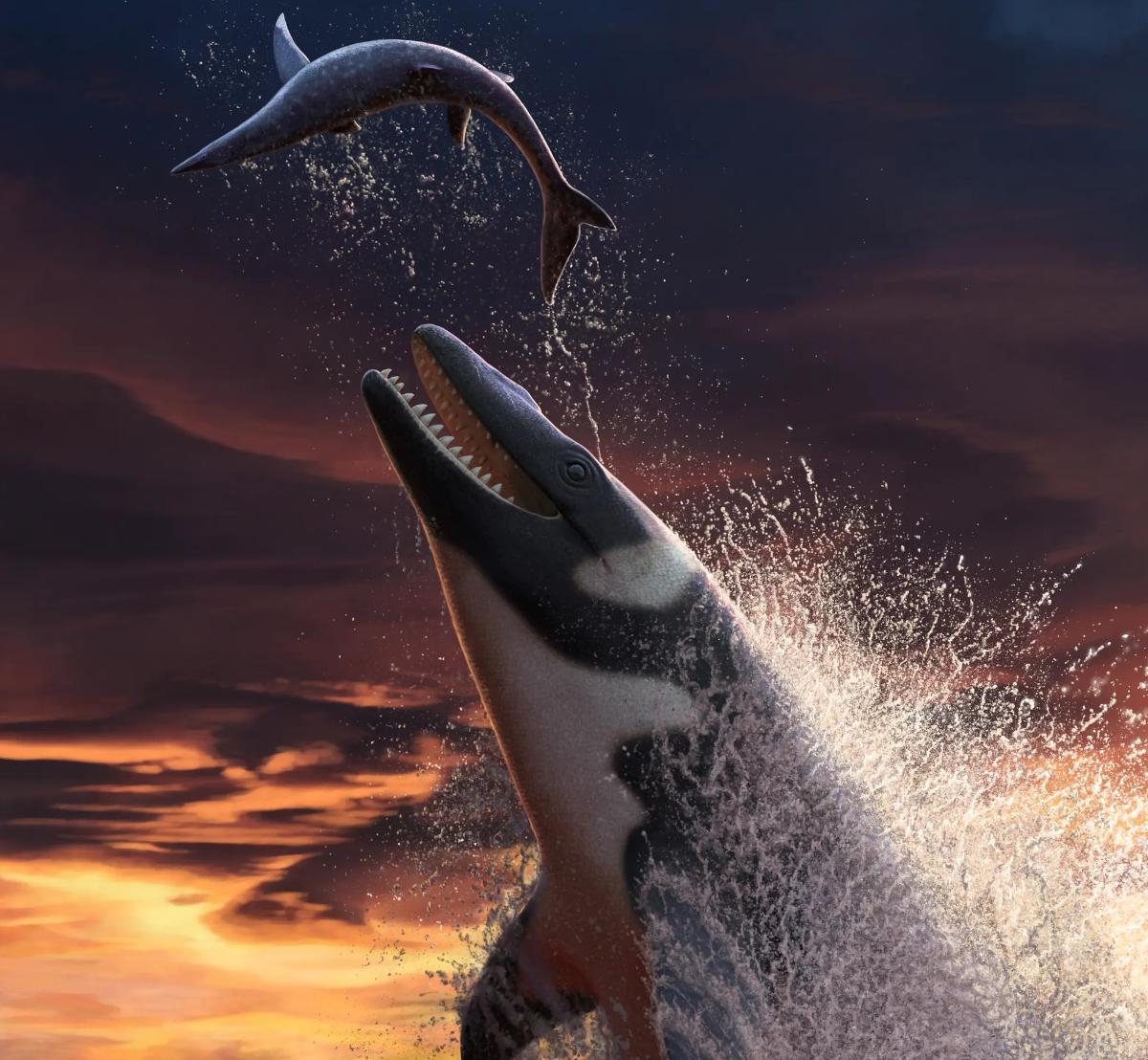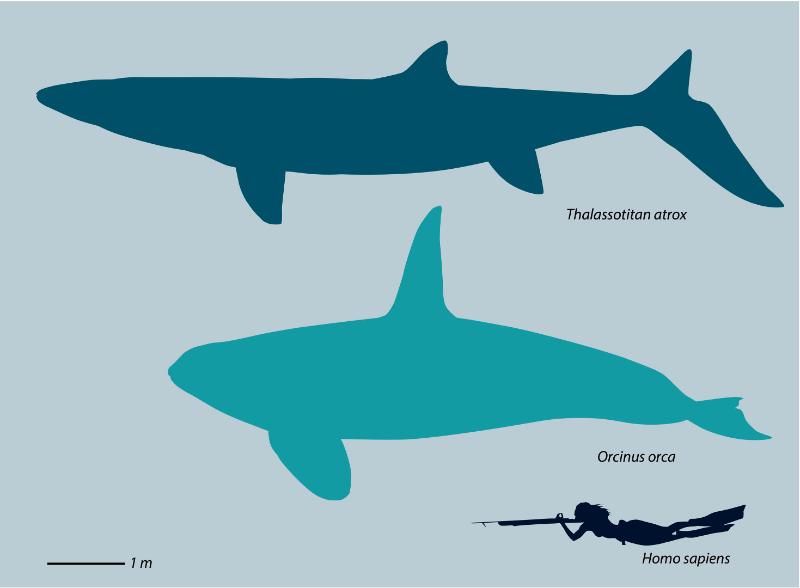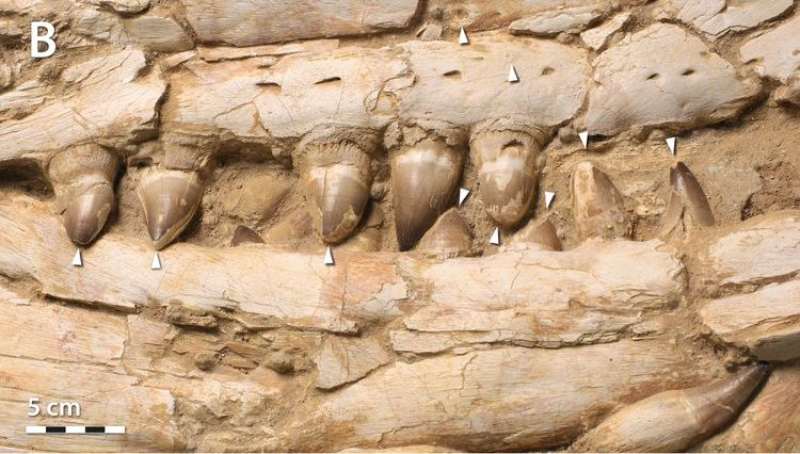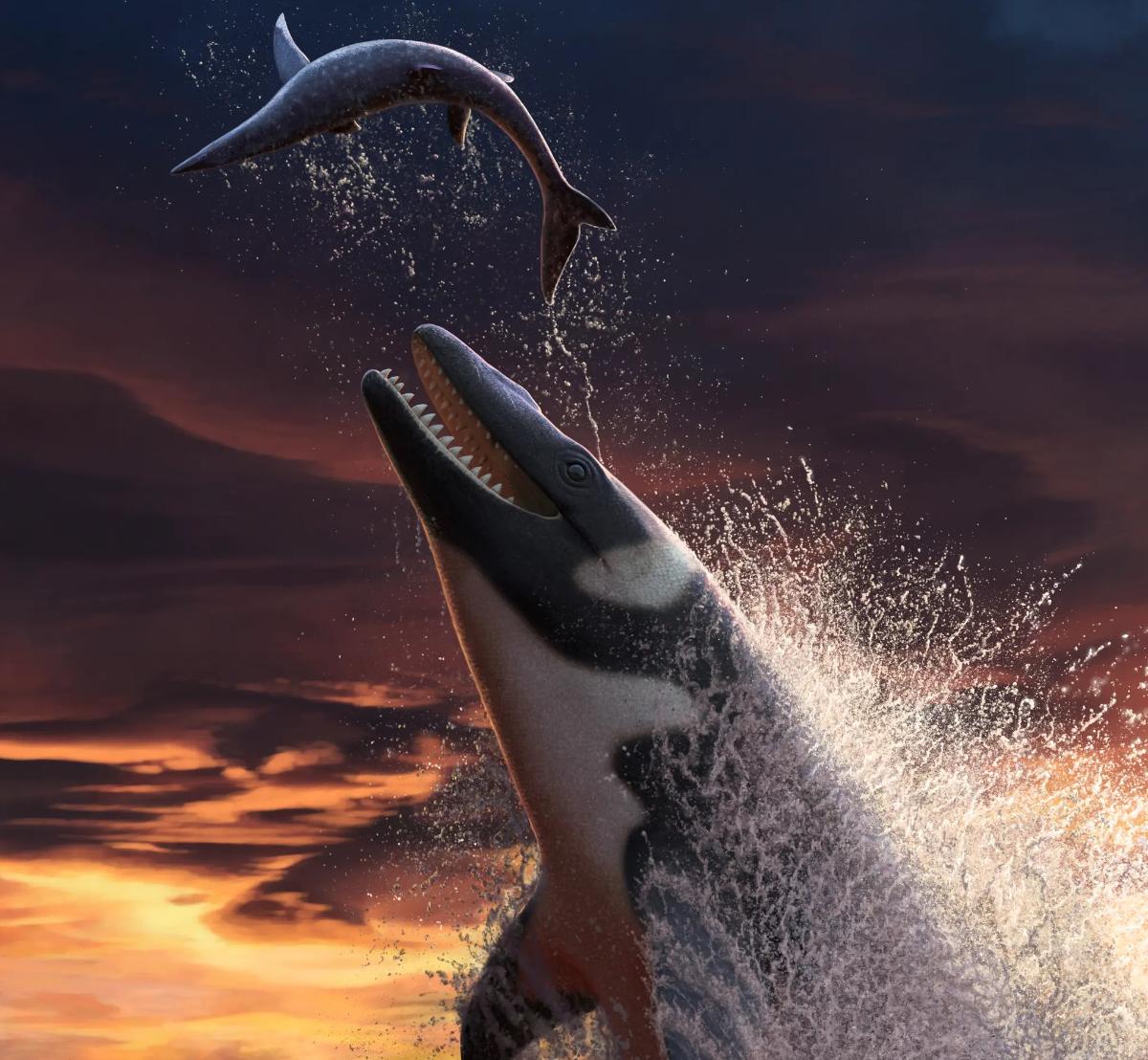Mosasaurs were marine reptiles that resembled dinosaurs in certain ways. A new fossil of this marine lizard that is huge in size has just been discovered in Morocco. The animal called Thalassotitan occupied the highest possible rung on the food chain.
Thalassotitan atrox was a fearsome predator that lived in the Cretaceous sea off the coast of northwest Africa more than 65 million years ago. It had a mouth full of sharp, pointed teeth, powerful fins, and could grow to a length of up to 39 feet (12 meters). He certainly stood at the top of the food chain in that region of the sea.
The fossil of a huge mosasaur was discovered by Nick Longrich and his colleagues in the rich fossil beds near Casablanca, Morocco. Their findings were published in the journal Cretaceous Research. They discovered the skeletal remains of the species as well as those of possible prey, such as those of sea turtles, plesiosaurs, and other mosasaurs, along with the animal itself.

According to what Longrich and coauthors have written, the new species should be envisioned as a combination of the Komodo dragon, the great white shark, the Tyrannosaurus rex, and the killer whale. The lizards and snakes that live on Earth today are distantly related to the dinosaurs known as Mosasaurs.
However, they were even more suited to living in the water than the sea lizards that reside on the Galapagos Islands and routinely go ashore to spawn or even simply to warm up. This is because the sea lizards on the Galapagos Islands go onshore to breed. For example, Thalassotitan atrox and its cousins did no longer have legs; instead, they had fins and a tail that was similar to that of sharks.
Thalassotitan means “sea monster,” and it comes from the Greek words “thalassa” and “titan,”. The species name atrox, means “cruel” or “merciless.”

Skulls, vertebrae, and the limbs of fingers and toes were among the bones that were unearthed. When taken together, they made it possible to provide a comprehensive description of the head, including the jaws and teeth, as well as the skeleton, which included the shoulders and the forelimbs. As a result of possessing a gigantic skull that measured 4.6 feet (1.4 meters) in length and a body that was over 29 feet (9 meters) in length, the Thalassotitan was larger than killer whales.
And whereas the majority of mosasaurs have long jaws and thin teeth to hunt fish, the Thalassotitan had a short, wide snout and enormous, conical teeth similar to killer whales. Because of this, it was able to seize and devour enormous prey. These modifications point to the individual’s status as an apex predator. They filled the same role in the ecosystem as killer whales and great white sharks do in the present day.

Some of the fossil teeth showed significant signs of wear and breakage: This mosasaur hunted not just soft prey but also creatures with hard bones or shells, such as sea turtles or smaller marine dinosaurs. Both soft and hard prey were consumed by the mosasaurs. This is further supported by the fact that prospective victims’ bones have been discovered beside the fossil and exhibit symptoms of having been subjected to acidic environments, such as the acidic environment of the stomach.
The group uncovered the similar remains of several mosasaurs and plesiosaurs, as well as bony fish and a sea turtle, in the nearby area of Thalassotitan. However, there is not yet any evidence that can be taken as conclusive that these creatures were in fact prey.

The discovery also lends credence to what paleontologists already knew about the area, namely that the area around northwest Africa and the ocean that surrounded it was one of the most hazardous places on the planet during the Cretaceous period. Paleontologists discovered some of the biggest carnivorous dinosaurs ever found at the Kem Kem Group fossil deposit, which is located between the countries of Morocco and Algeria.
Carnivores like thalassotitans lived in the sea while huge pterosaurs roamed the sky and formidable crocodiles hunted alongside freshwater sharks in the rivers and lakes of what was once the green Sahara. These are among the creatures that belong to the Kem Kem Group.
The newly discovered mosasaur, thalassotitans, inhabited the Earth in the last million years before the extinction of dinosaurs. The species, in conjunction with earlier findings of mosasaurs from Morocco, provides evidence that mosasaurs were not in a state of decline prior to the catastrophic asteroid impact that occurred at the end of the Cretaceous era. On the contrary, they were successful and most likely continued to give rise to new species right up to the end.


